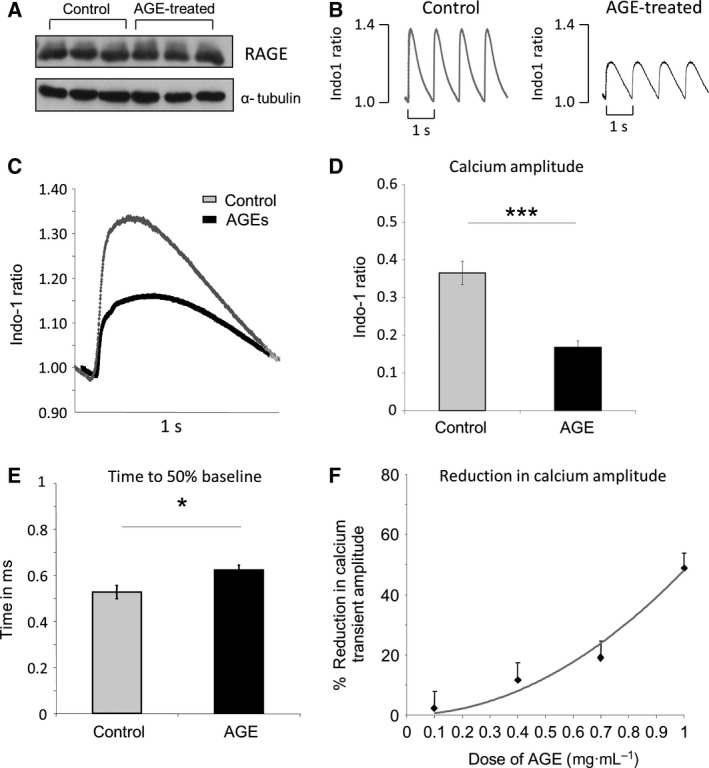Figure 1.

Advanced glycated end products (AGEs) reduce intracellular calcium transient in isolated cardiomyocytes. (A) Representative western blots showing the expression of AGE receptor (RAGE) and loading control (α‐tubulin) in neonatal rat cardiomyocytes (NRCM) with or without treatment with AGE (1 mg/mL for 24 h). (B) Representative intracellular calcium traces obtained from NRCM showing reduction in calcium transient amplitude and decay rate following AGE treatment (1 mg/mL for 24 h). Cells were loaded with Indo‐1 and field‐stimulated at a frequency of 1 Hz. (C) Average trace of calcium transients from control and AGE‐treated cardiomyocytes (1 mg/mL for 24 h). (D) Quantification of calcium amplitude and (E) time to 50% baseline showed a significant decrease in calcium amplitude (P < 0.001) and significant prolongation of time to 50% baseline (P < 0.01) (n = 18 cells from three independent NRCM preparations). (F) Dose‐dependent reduction in calcium transient amplitude in NRCMs treated with 0.1–1 mg/mL AGE for 24 h (n = 8–18 cells).
